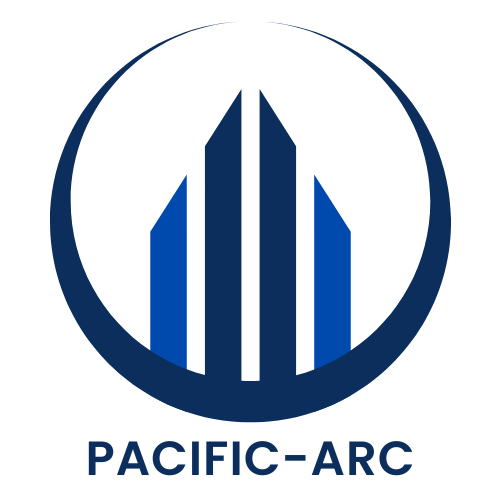Navigating the world of commercial loans can feel like trying to find a needle in a haystack while blindfolded. One of the biggest questions on every entrepreneur’s mind is: how much do I need to put down? The down payment isn’t just a number; it’s the golden ticket to unlocking the doors of opportunity. It’s the financial equivalent of showing up to a party with the best snacks—everyone’s going to want to mingle with you.
Understanding the ins and outs of commercial loan down payments can make or break a deal. Whether you’re a seasoned investor or a newbie looking to dive in, knowing the right down payment can save you headaches and dollars down the line. So grab your calculator and a cup of coffee—let’s break down the essentials that’ll have you strutting confidently into your next big investment.
Table of Contents
ToggleUnderstanding Commercial Loan Down Payments
Down payments play a pivotal role in securing commercial loans. Entrepreneurs often view them as essential investments that unlock financing opportunities.
Definition of Down Payment
A down payment represents a percentage of the total loan amount that a borrower must pay upfront. This payment usually ranges from 10% to 30% of the property’s purchase price. Various factors influence the required down payment, including the type of property and the borrower’s creditworthiness. Lenders assess the down payment as part of their risk evaluation process. High down payments can signal lower risk, which may lead to better loan terms.
Importance of Down Payments in Commercial Loans
Down payments significantly impact the financing process for commercial real estate transactions. Investors with substantial down payments often receive more favorable loan terms, including lower interest rates. Sufficient down payments can enhance the borrower’s credibility in the eyes of lenders. Additionally, a robust down payment reduces the overall loan amount, leading to lower monthly payments and less financial strain over time. Competitive markets may demand larger down payments to secure a property, making this factor vital for success.
Factors Influencing Down Payment Amounts

Multiple elements play a role in determining down payment amounts for commercial loans. Understanding these factors assists borrowers in making well-informed decisions.
Type of Property
Commercial properties include office buildings, retail spaces, industrial properties, and multifamily units. Each type carries different risk profiles, influencing down payment requirements. Lenders generally require higher down payments for properties with fluctuating values, such as retail spaces. In contrast, stable properties, like multifamily units, often receive more favorable terms. Lenders prioritize conventional properties with established rental income, typically necessitating lower down payments.
Borrower’s Creditworthiness
The borrower’s creditworthiness significantly impacts down payment amounts. Lenders assess credit history, credit scores, and financial stability during the application process. A strong credit score indicates reliability, potentially lowering required down payments. Conversely, borrowers with poor credit histories typically face higher down payment demands. Financial ratios, such as debt-to-income ratios, also contribute to lender evaluations. Better credit profiles can lead to reduced loan risk and improved lending terms.
Loan-to-Value Ratio (LTV)
Loan-to-value ratio measures the loan amount compared to the property’s appraised value. A lower LTV indicates lower risk for lenders, often allowing for reduced down payment percentages. Higher LTV ratios, which reflect a greater loan amount relative to property value, typically necessitate larger down payments. Property type and borrower’s financial health also influence LTV ratios. Lenders view favorable LTV ratios as indicators of borrower commitment, thus impacting overall loan conditions. Lower LTVs often correlate with lower interest rates and better loan terms.
Typical Down Payment Requirements
The down payment in a commercial loan significantly impacts the financing process. It’s essential to understand the typical requirements to navigate investment opportunities effectively.
Standard Down Payment Percentages
Commercial loans generally require a down payment ranging from 10% to 30% of the property’s total purchase price. A 20% down payment is often a common benchmark for various types of properties. Riskier properties, like hotels or retail spaces, may demand higher percentages, sometimes reaching 30%. In contrast, conventional office buildings might align better with the lower end of this range. Borrower circumstances also play a role; stronger credit scores can sometimes result in reduced down payment demands.
Variations by Lender
Lenders differ in their down payment expectations based on unique risk assessments. Some institutions specialize in specific property types and may offer more favorable rates with lower down payment requirements. Others, particularly credit unions and community banks, often have flexible options for local borrowers. These variations highlight the importance of comparing multiple lenders to find the best down payment structure. Understanding these differences ensures that borrowers make informed choices when seeking commercial loans.
Strategies for Saving for a Down Payment
Saving for a commercial loan down payment requires discipline and strategic planning. Implementing effective strategies can accelerate the process and make homeownership achievable.
Creating a Savings Plan
Establish a savings plan that includes specific goals and timelines. Begin by identifying the desired down payment percentage, which typically ranges from 10% to 30%. Track monthly savings contributions to remain accountable. Utilize a separate savings account dedicated to the down payment, minimizing temptation to access those funds. Set aside funds from each paycheck and consider automating transfers, ensuring consistent progress toward the target. Reducing discretionary expenses, such as dining or entertainment, allows reallocation of funds to savings. Use progress markers to celebrate milestones, keeping motivation high throughout the process.
Exploring Alternative Funding Sources
Consider alternative funding sources to complement personal savings. Grants and programs are available to first-time investors seeking financial assistance for down payments. Check local government initiatives that offer funding specifically for commercial property purchases. Partnering with investors is another viable option, sharing the financial burden while achieving mutual goals. Crowdfunding platforms enable effective pooling of resources among interested parties. Explore traditional and non-traditional lenders who may provide financing with lower down payment requirements. Research local and state programs offering assistance tailored to specific industries or communities. Each option presents unique benefits and risks, enabling investors to make well-informed decisions.
Understanding commercial loan down payments is essential for any entrepreneur looking to invest in property. A well-planned down payment strategy can significantly impact loan terms and overall financial health. By considering factors like property type and creditworthiness, borrowers can position themselves for success.
With the right approach to saving and exploring alternative funding options, achieving a substantial down payment becomes feasible. This not only opens doors to better financing opportunities but also enhances an investor’s ability to thrive in competitive markets. Making informed decisions today can lead to greater financial stability and growth tomorrow.





